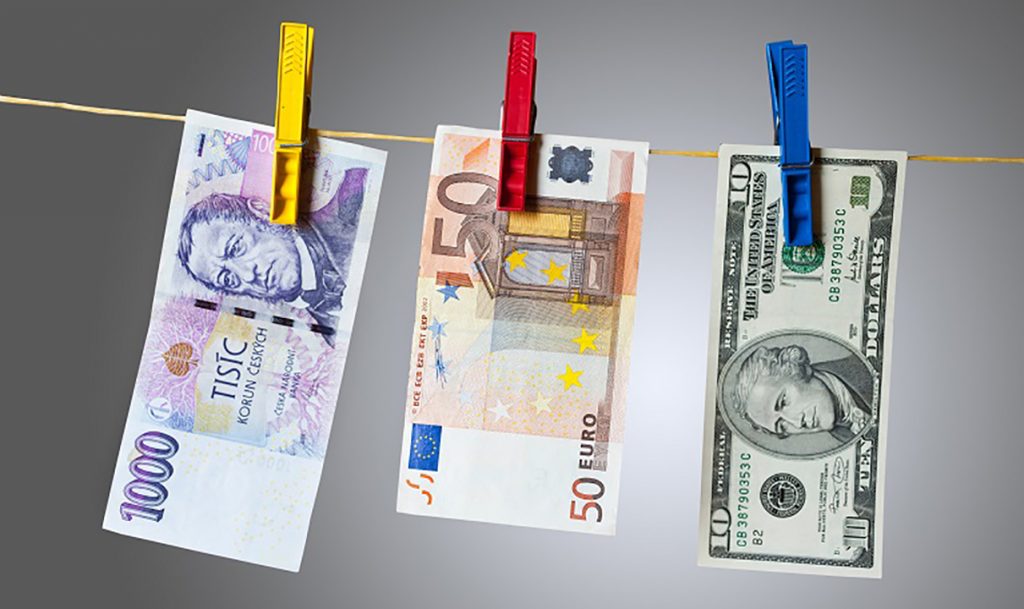What is Earnings Per Share eps? Definition of Earnings Per Share eps, Earnings Per Share eps Meaning

However, the metric should never be analyzed in isolation when making critical investment decisions. Instead, it should be compared with the industry average to get a clear idea of how the company is performing relative to other companies, subjected to the same macroeconomic conditions. A company’s diluted EPS measures the effect of adding all convertible securities that can be converted to common stock. In general, common convertible securities held by corporations are bonds or preferred stocks. Diluted EPS, on the other hand, will always be equal to or lower than basic EPS because it includes a more expansive definition of the company’s shares outstanding. Specifically, it incorporates shares that are not currently outstanding but could become outstanding if stock options and other convertible securities were to be exercised.
- For a simple example of calculating EPS, let’s say XYZ Company has net income during the year of $1,000,000 and there are no preferred shares outstanding.
- The company then announced preferred dividends of $275,000, with the total number of shares outstanding being 12 million.
- EPS, or earnings per share, is one of the most widely used metrics for fundamental stock analysis.
- When a company’s EPS shows continued growth over time, it can be a good sign that it’s able to maintain profitability.
- Earnings per share is best used as a comparative ratio between different reporting periods to gauge one company’s financial performance.
- While EPS is a popular metric for investors, it’s best used in conjunction with others.
If most shoe companies have PE ratios around 20, and XYZ Shoe Company has a PE ratio of 15, then XYZ is 25% less expensive than its peers on an earnings basis. If you’re comparing one company with another, you’ll want to use diluted EPS if both companies report it. That decrease in value didn’t have anything to do with the banks’ operations, but it still had to be accounted for in their official EPS calculations. Some banks, such as Morgan Stanley, provided adjusted EPS numbers that removed the effects of the tax change in their 2017 reports. Let’s say Company X had 50 million shares of outstanding shares while company Y had 10 million shares of outstanding shares.
Evaluating stock fundamentals
The more metrics you use to compare stocks, the more accurate a picture of its health you may be able to create. Looking closely at EPS, price to earnings and other measures can also help you spot and avoid value traps if you follow a value investing strategy. Value traps occur when a company appears to be undervalued but in reality, it isn’t. EPS is a byproduct of a company’s earnings, so overall there are a few ways to evaluate EPS. Looking at the income statement can be important for understanding the expenses of the company and how expenses are managed. Gross margin, operating margin, and net margin are all helpful for evaluating expenses at different phases of the income statement.
The best way to get the most accurate information is to calculate the weighted number of shares for that reporting period, since the number of shares can fluctuate over time. In addition, many companies include additional items such as significant gains or losses and possible share dilution, which we’ll discuss further. Earnings per share (EPS) is just one of many tools investors have in their toolbox to analyze the health of a business and estimate its overall value. EPS is the total net profit (minus dividends paid on preferred stock, if any) divided by the total number of shares people own in that company. It helps indicate how profitable that company’s shares are compared to others — the higher the EPS, the higher the profitability.

Conversely, if earnings are dropping, this is a sign the stock price might decrease. The first is to subtract preferred dividends from net income and divide them by the end-of-period shares outstanding. The other way is to subtract preferred dividends from net income and divide by the weighted average of shares outstanding. standard error of sample mean is inversely proportional to The main limitation of using EPS to value a stock or company is that EPS is calculated using net income. Non-cash expenses such as depreciation and amortization are subtracted from net income, and the lumpy nature of capital expenditures can cause a company’s net income to vary greatly across reporting periods.
The amount of profits a company is able to wring out of a given amount of capital is called Return on Capital, which is another performance metric in the investor toolbox. Earnings per share are one of the key factors investors should use when determining the financial health of the company. If you’re considering the purchase of stock from a specific company, evaluating its earnings per share is one indicator that the company is heading in the right direction toward profitability. To calculate EPS TTM, you’ll need to find a company’s net profits, dividends paid, and number of shares outstanding. Those future profits yield returns for investors in the form of a dividend or share buyback. Alternatively, they might be re-invested in the company to drive growth, which in turn boosts expectations for more profits further down the road.
Limitations of EPS
A more refined calculation adjusts the numerator and denominator for shares that could be created through options, convertible debt, or warrants. The numerator of the equation is also more relevant if it is adjusted for continuing operations. When you compare brokerage accounts, consider the resources and tools each one offers to help you make educated investment decisions.
The investing information provided on this page is for educational purposes only. NerdWallet, Inc. does not offer advisory or brokerage services, nor does it recommend or advise investors to buy or sell particular stocks, securities or other investments. A company’s EPS can vary based on fluctuations in earnings, total number of shares outstanding, or both. The company has granted 13,286,000 stock options to employees, which raises the total outstanding share count to 454,208,000. Dividing the same $2,761,395,000 of net income into 454,208,000 equals an EPS value of $6.08. A higher EPS also indicates that a company could be profitable enough to be in a position to pay out some money to shareholders.
Adjusted EPS
Earnings per share (EPS) represents the amount of profit that can be generated per share of stock. Earnings per share (EPS) is more or less what it sounds like — a measurement of a publicly traded company’s profits on a per-share basis. Forward earnings per share is based on projections for a given period in future. Both the company and analysts usually look at forward EPS as they try to predict how a company is likely to perform.
With EPS Growth And More, Tootsie Roll Industries (NYSE:TR) Makes An Interesting Case – Simply Wall St
With EPS Growth And More, Tootsie Roll Industries (NYSE:TR) Makes An Interesting Case.
Posted: Wed, 30 Aug 2023 07:00:00 GMT [source]
With this in mind, an investor looking for a stock with a high degree of dividend sustainability may be better off choosing Procter & Gamble. From an earnings yield point of view, B has a yield of 10%, which means that every dollar invested in the stock would generate EPS of 10 cents. Stock A only has a yield of 5%, which means that every dollar invested in it would generate EPS of 5 cents. Finally, consider the broader economic picture when trying to determine what is a good EPS for any given company. When a market downturn or recession happens it can have different consequences for individual sectors of the market. In a recessionary environment, for instance, consumer staples might see a boost while consumer discretionary spending takes a dip.
What Should You Look at When Analyzing EPS?
If you’re an investor, it’s important to do your due diligence on a company before you invest in its stock. One way to do this is by looking at the company’s earnings per share in recent quarterly reports. EPS and what qualifies as a good EPS is dependent largely upon the company itself and market expectations of how well that company will perform.
- Generally, if a company has strong earnings for a quarter, it’s a sign that the stock price may increase.
- Because it’s a measure of profitability on a per-share basis, EPS is commonly used by investors to estimate the value of a company, per share.
- A multitude of factors can affect the EPS analysis of a company, the EPS growth of an industry, and operating cash flow.
- Since companies vary widely in size and earnings, and since they all issue a different number of shares, knowing the ratio of earnings to share helps put a company’s earnings in perspective.
- It is for this reason that companies with low current earnings but bright prospects usually command high P/E.
A low P/E indicates that a stock is undervalued providing investors an opportunity to buy a stock on the low. On the other hand, companies with high current earnings but dim prospects tend to also command low P/E ratios. From the computation above, it is clear that each stock of Company Y would be more valuable to shareholders, at $5 earnings per share, despite generating half of Company X net income.
Betting on an earnings beat basically means you think you know something that the best Wall Street analysts don’t know. If a company’s most recent quarterly EPS is $0.12, and its EPS in the same quarter last year was $0.09, then it has a quarterly year-over-year EPS growth rate of 33%. Quarterly year-over-year EPS growth is a company’s most recent quarterly EPS divided by its EPS from the same quarter the prior year, minus 1. Annual EPS growth is a company’s EPS over the last year divided by its EPS over the prior year, minus 1. We believe everyone should be able to make financial decisions with confidence.
EPS and Capital
When comparing companies, it’s helpful to look closely at how EPS is trending and how it matches up to competitor earnings. Remember that a higher EPS can suggest growth and stock price increases. However, nothing in investing is given, and EPS doesn’t necessarily guarantee anything. Aside from EPS, however, remember to consider other measures of financial health.

A stock with a dividend yield of 4% and possible appreciation of 6 percent has a potential total return of 10%. The earnings yield makes it easier to compare potential returns between, for example, a stock and a bond. Let’s say an investor with a healthy risk appetite is trying to decide between Stock B and a junk bond with a 6% yield.
Comparing earnings per share ratios
EPS is the abbreviation for “Earnings Per Share” representing a simple financial metric where a company’s earnings are presented on a per-share basis. TTM is quite useful for investors and analysts as it allows the normalization of cyclical variations or seasonal impacts on a company’s financial performance. For this reason, many will closely https://1investing.in/ monitor a company’s earnings metrics to assess its overall financial health. It’s a straightforward way to assess profitability, as it takes the complexities of the income statement and distills it into one simple number. EPS is a simple, efficient way to analyze a company’s growth trends as well as how it compares to its peers.
Nvidia’s $25 billion buyback ‘a head-scratcher’ for some shareholders – Reuters
Nvidia’s $25 billion buyback ‘a head-scratcher’ for some shareholders.
Posted: Fri, 25 Aug 2023 07:00:00 GMT [source]
Basic EPS is determined using so-called “free float,” or the number of active company shares in the market. Diluted EPS, on the other hand, is determined using free float plus convertible instruments, such as stock options granted to employees that may become common shares in the future. Because it typically includes more shares, diluted EPS usually will be lower than basic EPS. For instance, if the company had annual earnings of $500 million and had 250 million shares of stock issued and outstanding (in one period), its basic EPS would be $2.00.